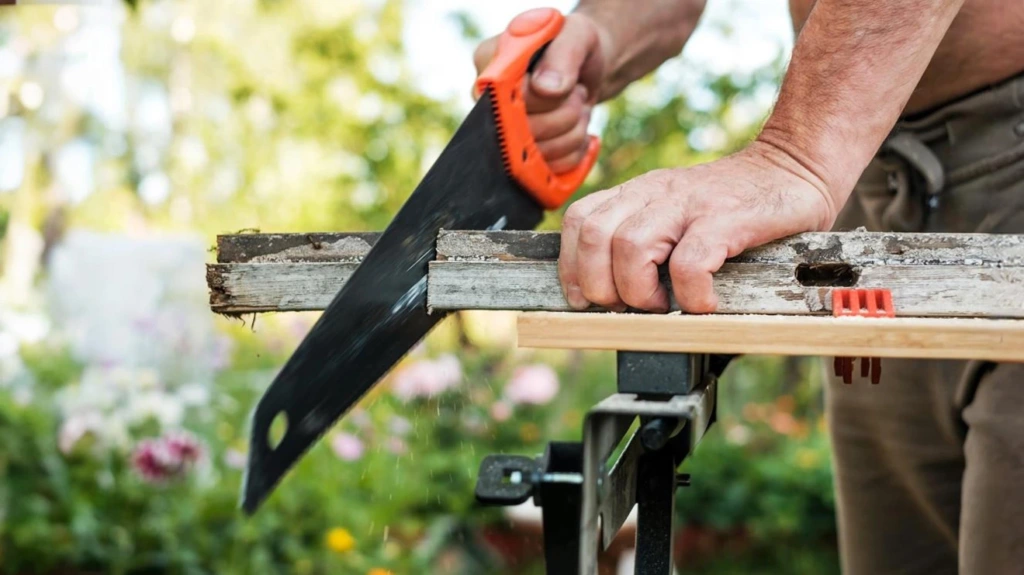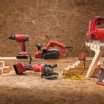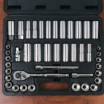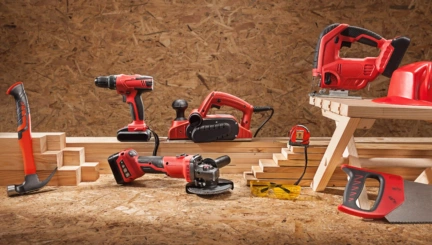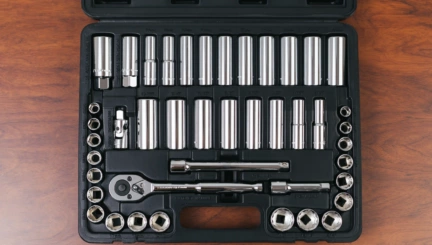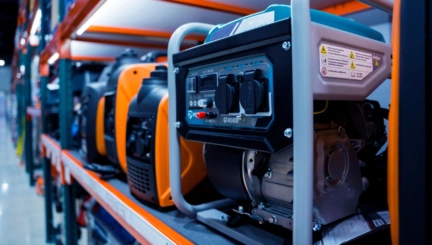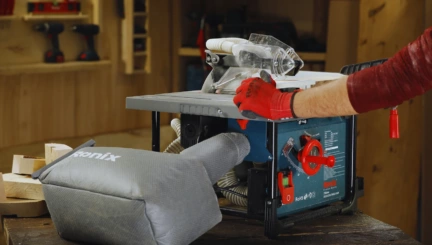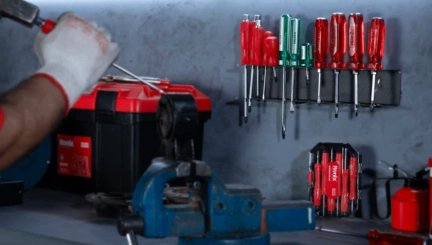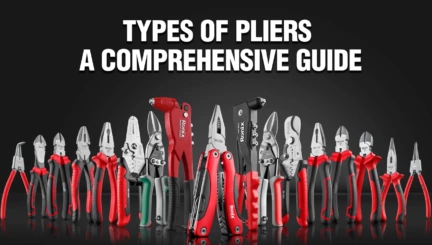- 9min
- 30739
- 0
If you’ve ever found yourself staring at a wall of hand saws at the hardware store, wondering which one to pick, you’re not alone. With so many types of hand saws, it can be a little stressful to figure out which one is right for the job. But don’t worry, we’ve all been there (I’ve been there more times than I can count)!
Maybe you’re an expert woodworker or someone who just needs to make some repairs around the house, choosing the right hand saw can make all the difference. It’s not just about getting the job done, it’s about getting it done right (and doing less for better results, to be honest).
In this guide, we are going to talk about the most common types of hand saws, what each one is best for, and how the teeth on these saws play a big role in their function. By the end, you’ll know exactly which hand saw to get, whatever project you’re working on. Let’s begin!
8 Hand Saw Types and Their Uses
Hand saws exist in every toolbox, but they’re not all the same. Each hand saw types are designed for a specific job, like cutting wood, metal, or something else entirely. Let’s take a closer look at eight of the most common hand saws and how they’re used.
1. Crosscut Saw
The crosscut saw is your choice when you need to cut wood across the grain. The teeth are designed to cut through wood fibers without leaving them ragged, so it’s perfect for rough cuts where you need to cut a board or trim a piece of wood. If you need quick, clean cuts on lumber, the crosscut saw is the one to grab.
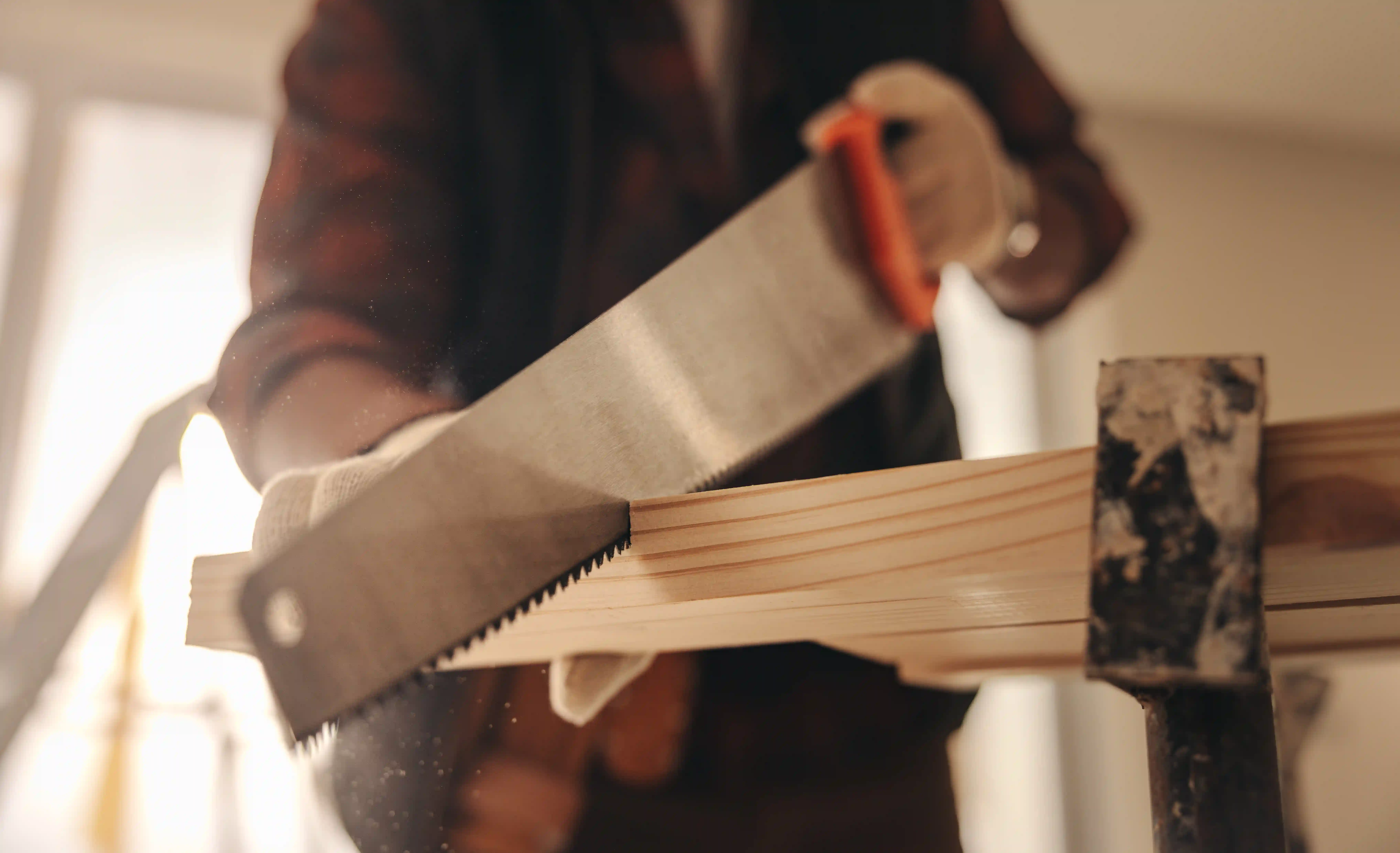
2. Rip Saw
If you’re looking to cut wood along the grain, the rip saw is your tool of choice. The rip saw is built to cut straight down the grain, and its large and chisel-shaped teeth make it easier to do long cuts without getting stuck. This saw is perfect for when you need to rip boards down to size or create straight and clean lines in your lumber. Think of it as the tool you need when you’re working with big pieces of wood and need accurate (long) cuts.
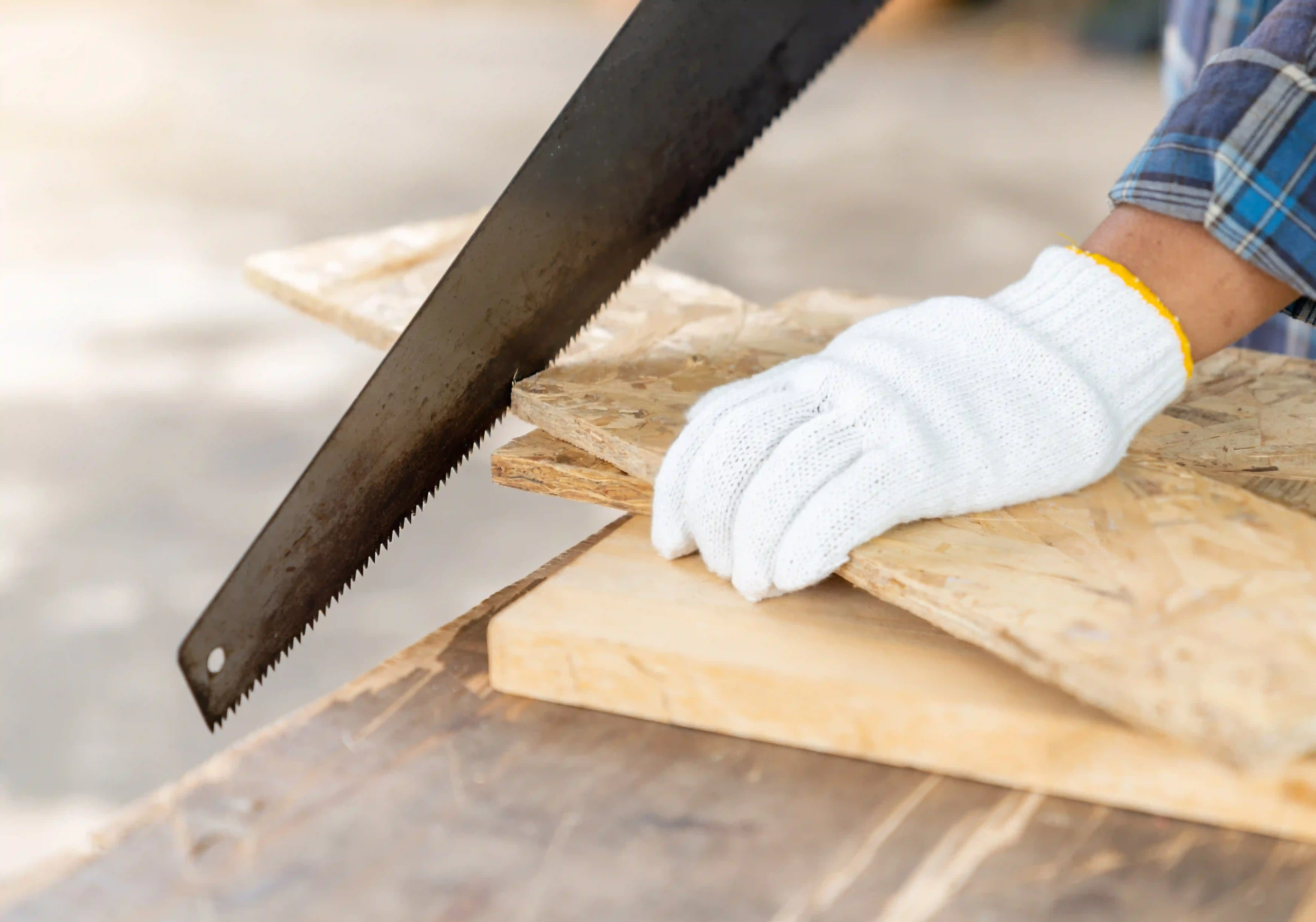
3. Coping Saw
The coping saw is like the accurate saw of the hand saw world. When you are working with curves or in tight spaces, this saw can help you out with its thin and flexible blade. But it’s not just for wood, the coping saw can also handle plastic and light metals, so if you’re doing stuff in the workshop and need to cut curves, the coping saw is your best choice.
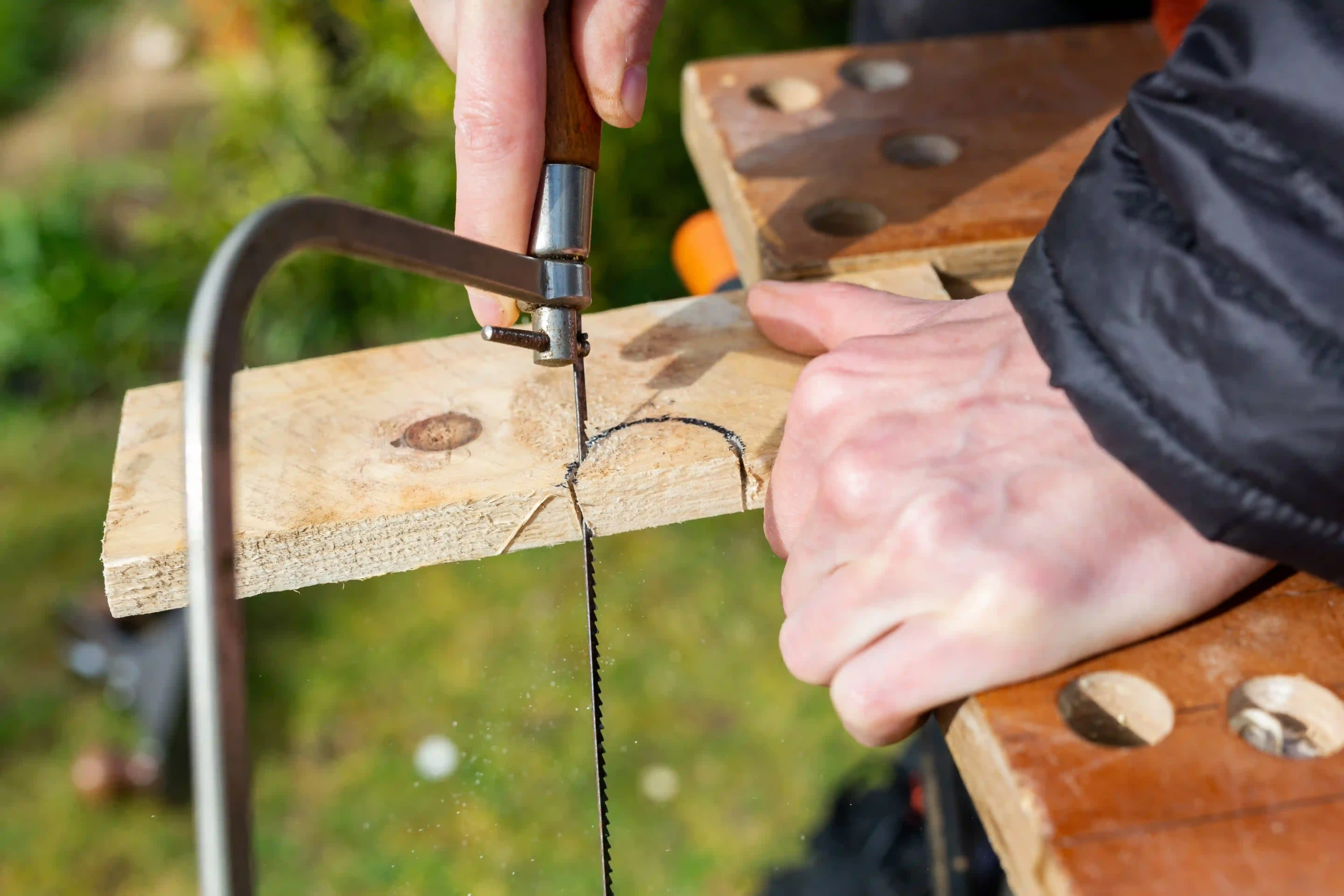
4. Backsaw
Usually, when you want to be accurate when it comes to cutting, you go to the backsaw. The spine (the backside) is reinforced and keeps the blade steady, so you get clean and straight cuts without wobbling all over the place. It’s a great choice for when you want to do detailed woodworking; it shines in those types of projects. If you are into making furniture, you’re gonna love the backsaw and the control it gives you. Personally, when I need everything to line up perfectly, it never lets me down.
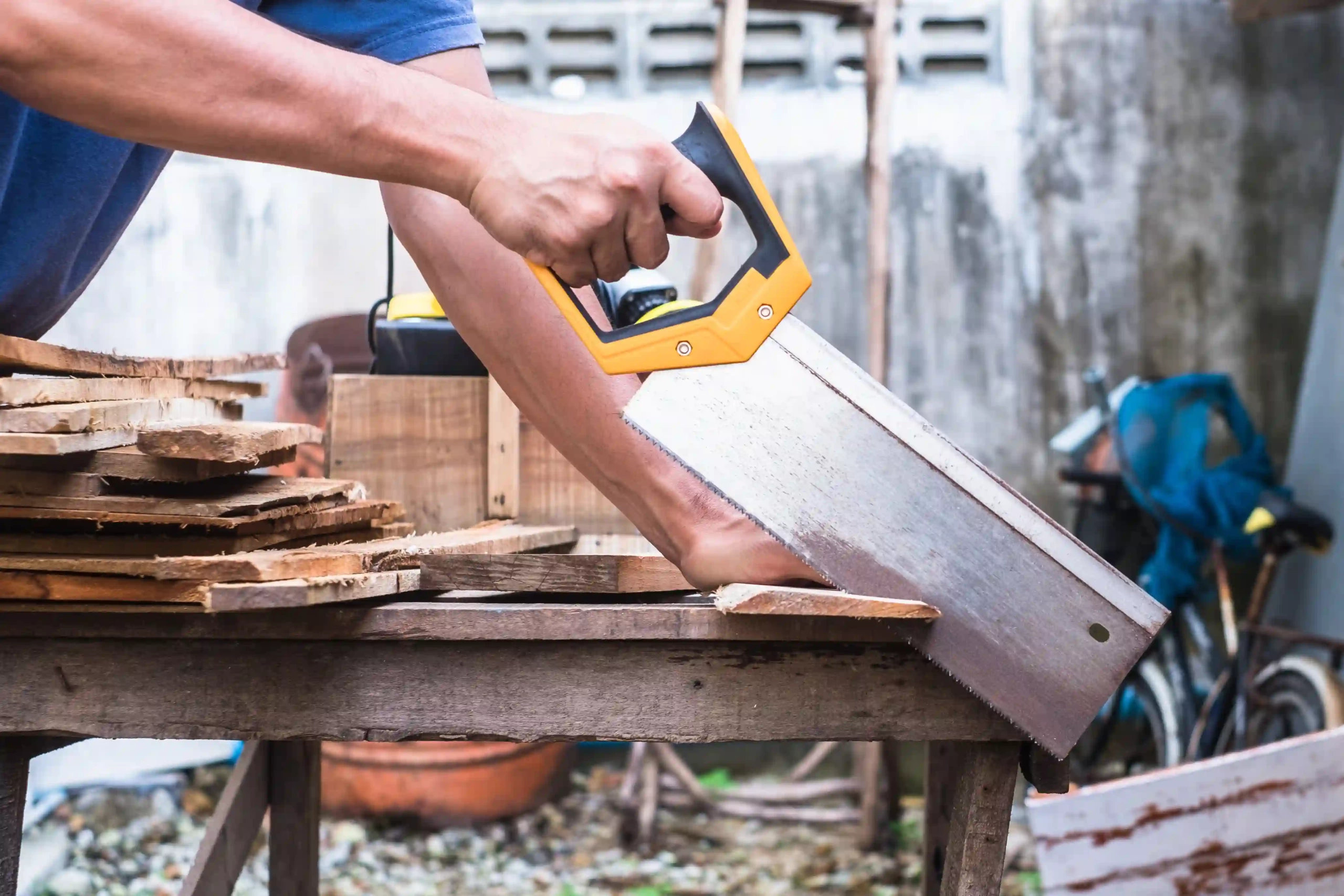
5. Hacksaw
This saw’s thin and replaceable blade is designed to make quick work of metal pipes, rods, and even thick plastics. What I love about the hacksaw is its versatility, if one blade wears down, you can just swap it out for another depending on what you’re cutting. It’s not flashy, but it gets the job done every time.
Hacksaw -Chroma Model Ronix RH-3620
Hacksaw Frame-Over Head Grip Ronix RH-3610
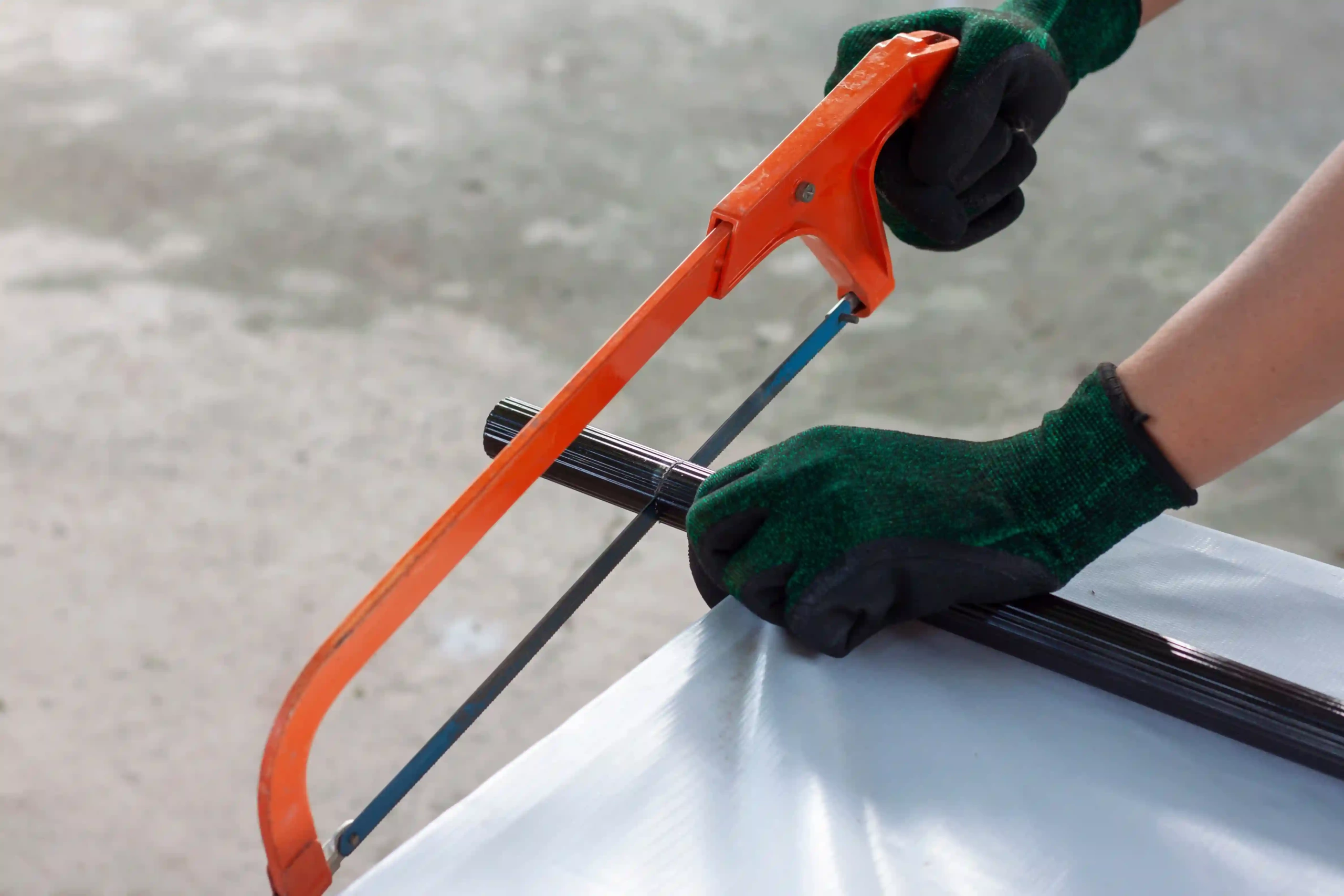
6. Bow Saw
The bow saw is for heavy-duty outdoor tasks. Need to prune a tree or chop up some firewood for a weekend camping trip? This saw’s large and aggressive teeth will cut through branches and logs easily.
It’s quick and powerful, but not really accurate; so if you have a pile of wood to go through, this is going to make your life a lot. Nothing beats it when you need to quickly clear out branches or prep firewood. It’s the kind of tool that makes you feel like you’re getting stuff done in no time.

7. Keyhole Saw
Keyhole saws may look a bit weird, but the long and narrow blade helps with hard-to-reach spots, especially when you are working with drywall or plaster. Sometimes you need to carve out holes for some pipe or electrical box, and that’s where this saw can help you! You can also use it for cutting curves or odd shapes. It’s small but mighty!
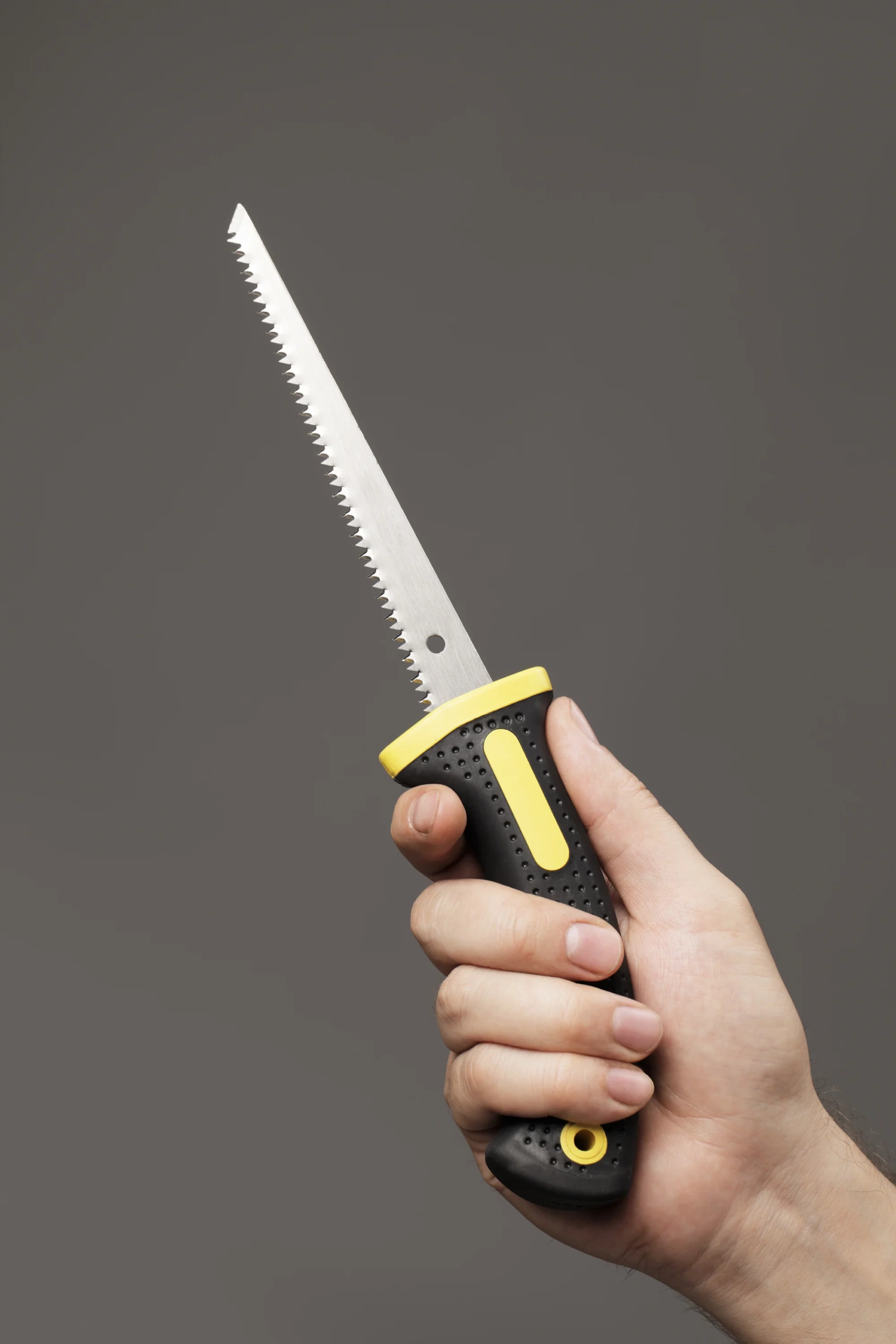
8. Japanese Saw
Japanese saws are a favorite among woodworkers for their precision and unique design. Western saws, cut on the push stroke, but Japanese saws cut on the pull stroke, so you have more control and finer cuts. These saws are perfect for when you need accuracy, and I’ve found that they’re great for projects where you can’t afford to make a mistake. If you’re into detailed woodworking, you’ll definitely want one of these in your toolkit.
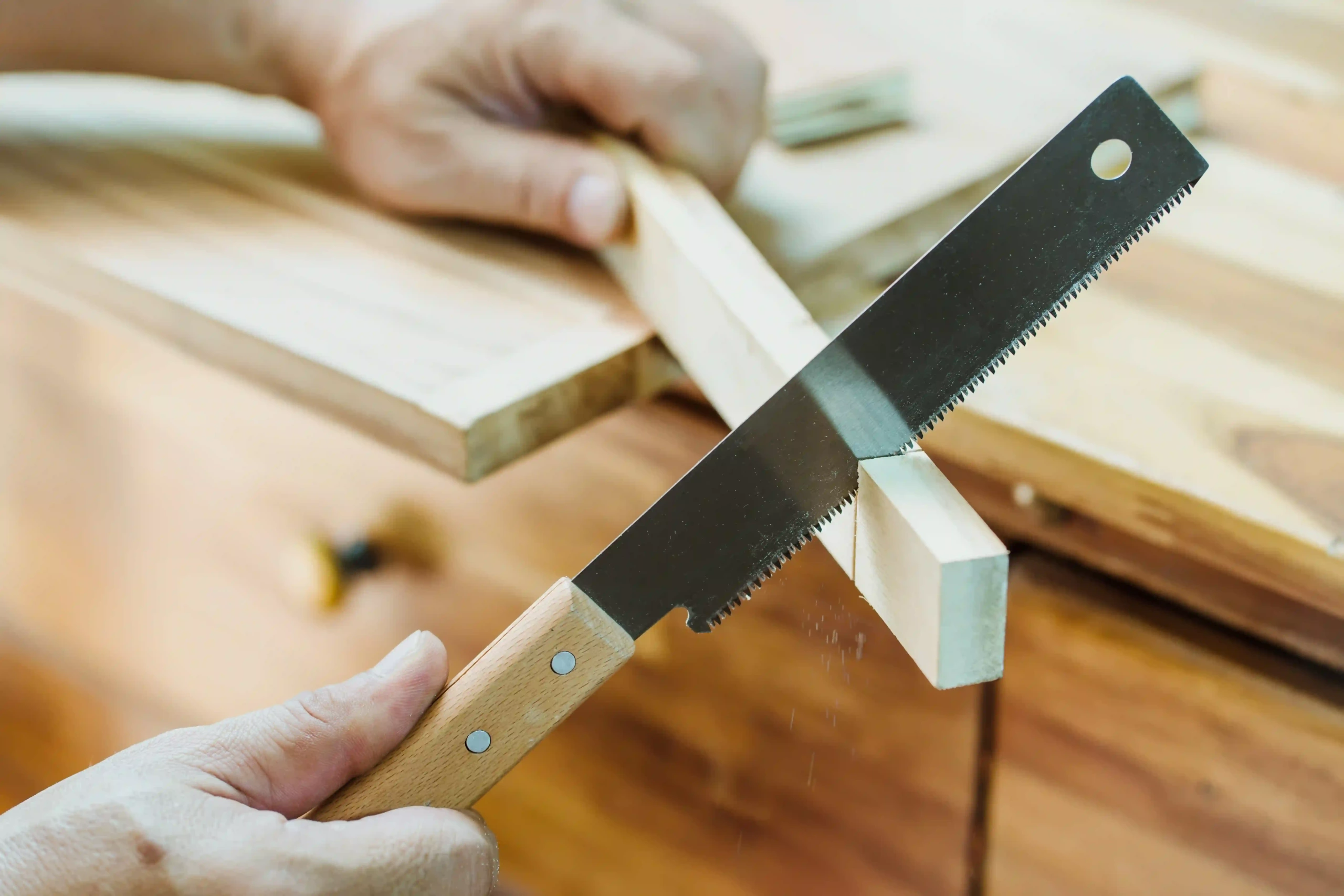
Types of Hand Saws by Their Function
Now, there is always a question that comes up when choosing a type of hand saw: Which material needs which saw? Can I use the same hand saw for both wood and metal? The answer is no. Each hand saw is designed with specific factors in mind, so it’s necessary for you to choose a hand saw that is suitable for the task and material you are working with, whether it’s wood, metal, plastic, or something else.
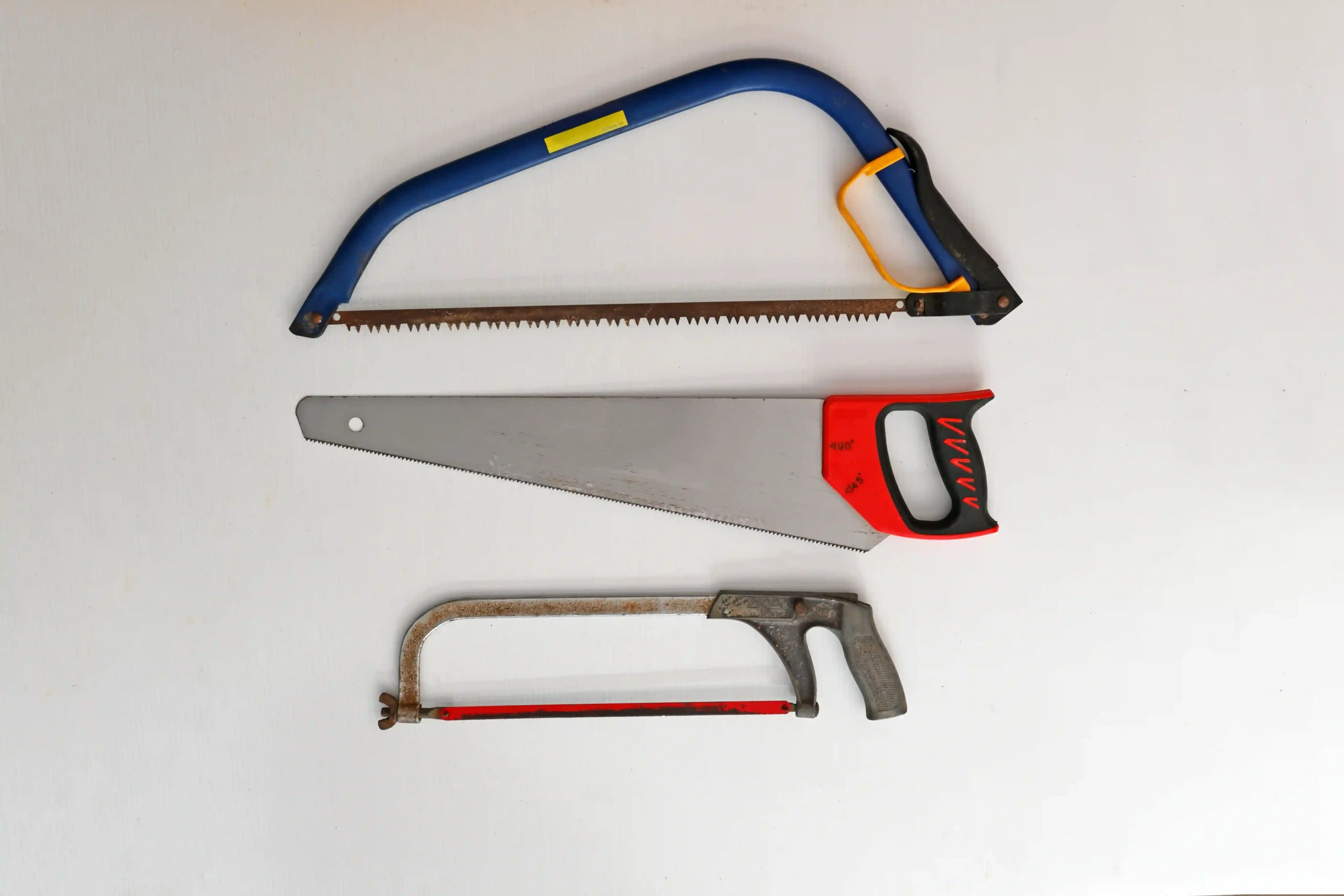
Hand Saws for Wood
These saws cover a wide range of applications, such as carpentry, furniture making, and construction. Keep in mind that there isn’t one specific hand saw that is suitable for all projects, from fine woodworking to rough lumber cuts. Each material requires specific tools, such as a crosscut saw, rip saw, or backsaw.
Hand Saws for Metal
These types of handsaws are designed in a special way to cut through metal. They are usually designed with specialized teeth for clean cuts. One of the most suitable metal-cutting hand saws is the hacksaw. Also, pay attention to the thickness and type of your metal.
Hand Saws for Plastic
Working on plastic has always been risky and hard. Plastic materials like pipes and panels are some of the materials that we all have trouble making accurate cuts on. However, using saws like a hacksaw or coping saw with their special blades can be a big help in finishing your projects in the cleanest way.
Hand Saws for Drywall
You’ve definitely been working on a construction or renovation project where you needed to make cuts in drywall or plaster but didn’t have the right tool. I recommend using a keyhole saw or a jab saw for that. They will give you clean cuts and are perfect for hard-to-reach places.
Different Types of Hand Saws by Their Teeth
While taking a look at the different types of hand saws, you will immediately notice the differences in their teeth. A fact that you should pay attention to is that different saw teeth have a different effect on the performance you want to achieve. So, let’s break it down and take a look at the different teeth and their functions
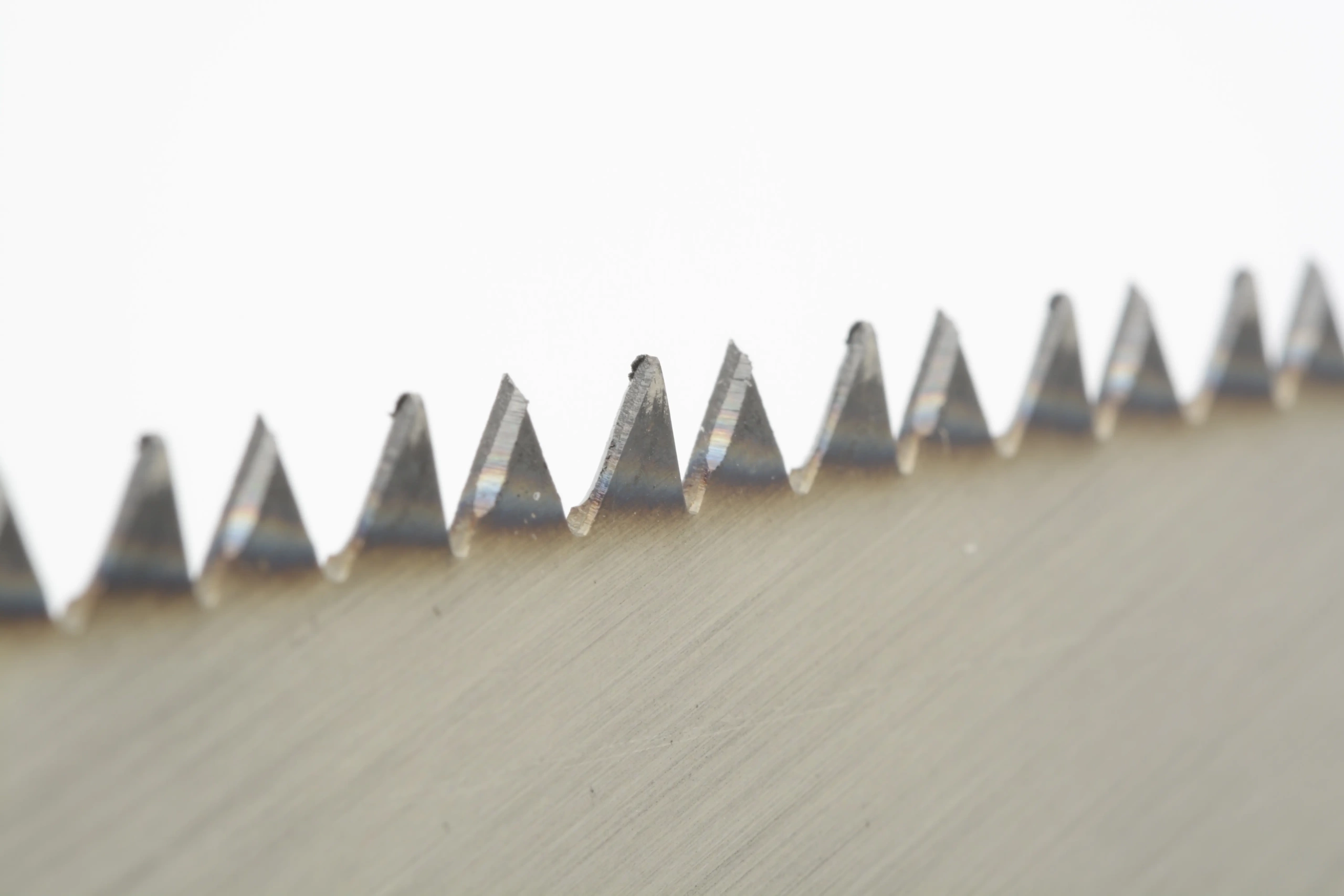
Crosscut Teeth
The crosscut teeth of the saw have a bevel shape. They provide smooth and clean cuts across the wood grain. These teeth are great and ideal for carpenters and woodworkers cutting lumber
Rip Teeth
The rip teeth, as their name suggests, are perfect for ripping wood and cutting in straight lines. They have chisel-shaped teeth, which efficiently cut along the wood grain.
Fine Teeth (High TPI)
If you are doing woodworking that requires adding detail, you know how important and effective the teeth of your saw are. Fine teeth with a high TPI (teeth per inch), closely spaced and smaller in size, are perfect for detailed woodworking projects or fine metal cutting. Take a look at a hacksaw, and you will notice those small teeth.
Coarse Teeth (Low TPI)
If you have a thick material to work on, like tree branches or rough projects, you will definitely need a saw with teeth that can handle it. The best teeth for such projects are widely spaced and larger in size
Specialty Teeth
The design of these teeth features customized tooth patterns for specific materials. You mostly see these teeth on Japanese saws. They are great for fine joinery and cutting plastic.
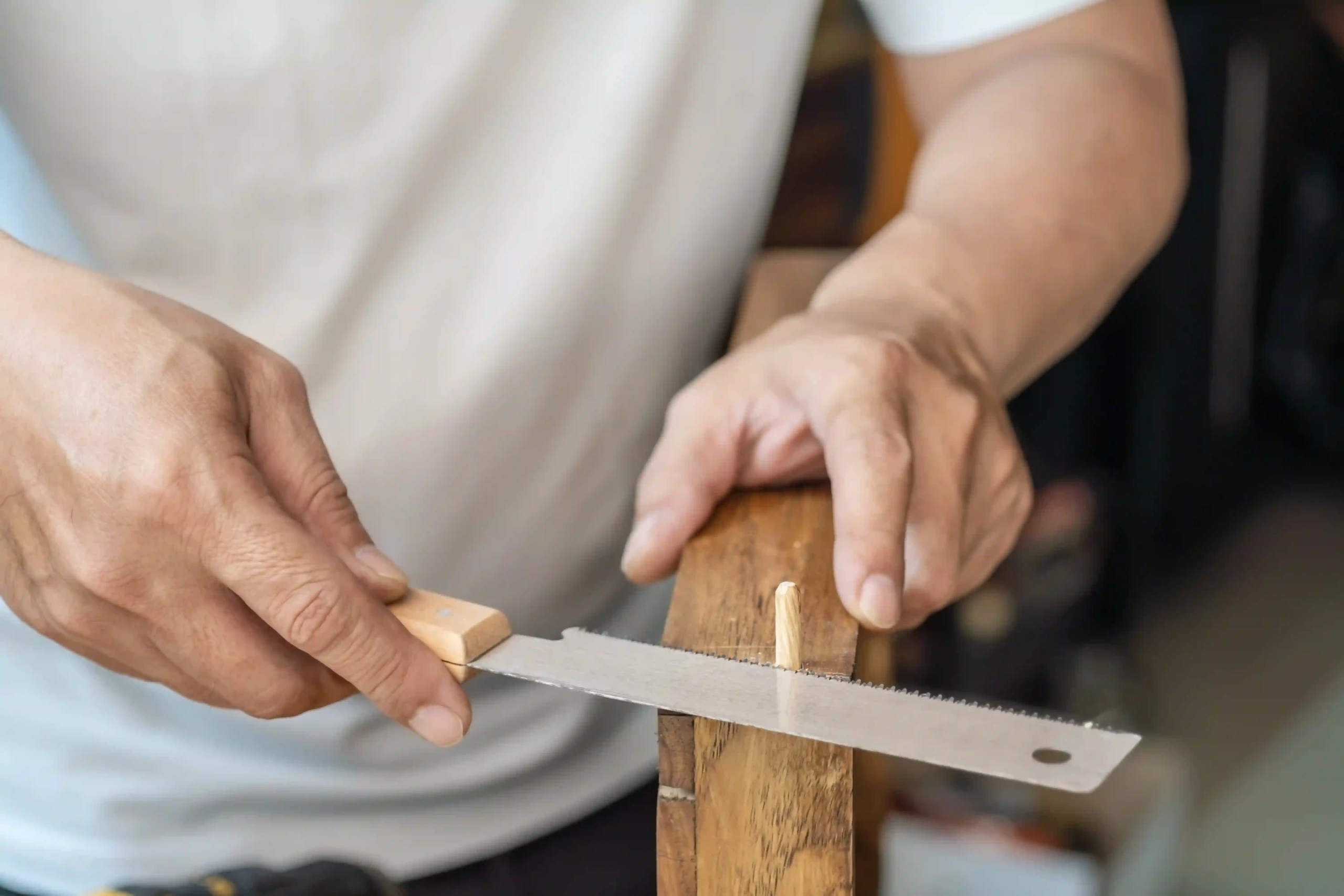
Conclusion
We talked about the different types of hand saws and their uses, and we told you that it is really important to choose a suitable tool and saw for your specific projects. You need to know that the key factor distinguishing a pro from a beginner is their grasp of the function of the tools and selecting the right one for their project. So, read the tips again, grab the tool that fits your project, and create masterpieces.
FAQ
How many handsaw types are there?
There are many types of hand saws out there, but the most famous ones are Crosscut Saw, Bow Saw, Rip Saw, Hacksaw, Back Saw, Keyhole Saw, and Japanese Saw
Can hand saws be used to cut plastic or drywall?
yes, hand saws can be used to cut plastic or drywall, but it’s important to choose the right type of saw for each material

Ronix
5 October 2024
